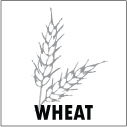Beginning January 1, 2023, all foods must be labelled for the “Big-9” Allergens, as identified in the FDA Model Food Code and the 2021 FASTER Act.
 |  |  |
 |  |  |
 |  |  |
Congressional Actions Around Food Allergens
FALCPA (2004)
In 2004, Congress passed the Food Allergen Labeling and Consumer Protection Act of 2004 (FALCPA). This law identified eight foods as major food allergens: milk, eggs, fish, shellfish, tree nuts, peanuts, wheat, and soybean.
FASTER Act (2021)
On April 23, 2021, the Food Allergy Safety, Treatment, Education, and Research (FASTER) Act was signed into law, declaring sesame as the 9th major food allergen recognized by the United States. This change will become effective on January 1, 2023.
FDA Model Food Code
The Food Code is a model for safeguarding public health and ensuring food is unadulterated and honestly presented when offered to the consumer. It represents FDA’s best advice for a uniform system of provisions that address the safety and protection of food offered at retail and in food service.
Local, state, tribal, and federal regulators use the FDA Food Code as a model to develop or update their own food safety rules and to be consistent with national food regulatory policy.
Most recent full edition (website link): https://www.fda.gov/food/fda-food-code/food-code-2022
Download the full 2022 FDA Model Food Code as a PDF: https://www.fda.gov/media/164194/download
Summary of Changes In the FDA Food Code 2022: https://www.fda.gov/food/fda-food-code/summary-changes-2022-fda-food-code
What do Amino Acids have to do with allergens?
Amino acid sequences play an important role in the development of food allergies. Proteins are composed of chains of amino acids, and the specific sequence of amino acids determines the structure and function of the protein.
In some individuals with food allergies, the immune system mistakenly identifies a specific protein in a food as harmful and mounts an immune response against it. The specific amino acid sequence of the protein can play a role in determining how the immune system reacts to it.
For example, a small change in the amino acid sequence of a protein can cause the protein to be recognized as foreign by the immune system and trigger an allergic reaction. On the other hand, a change in the amino acid sequence can cause the protein to no longer be recognized as foreign and reduce the risk of an allergic reaction.
Therefore, understanding the amino acid sequences of proteins in foods can help researchers better understand the mechanisms behind food allergies and develop new strategies for prevention and treatment.